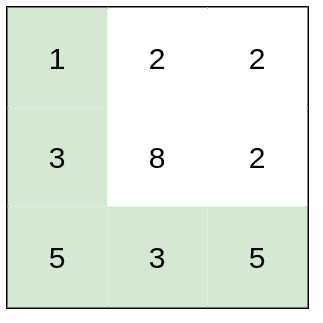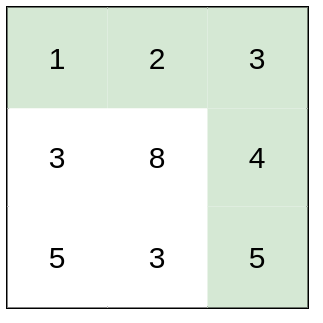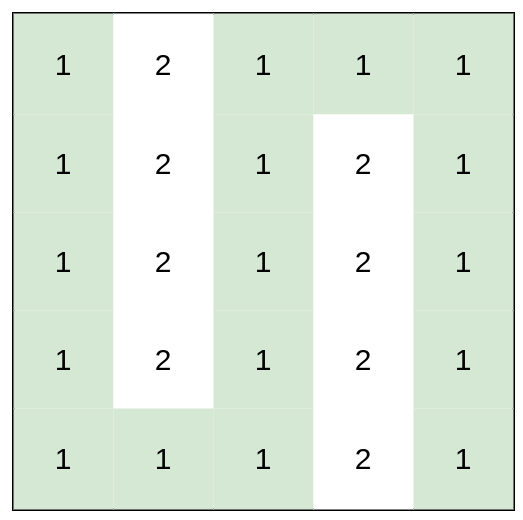Description
You are a hiker preparing for an upcoming hike. You are given heights, a 2D array of size rows x columns, where heights[row][col] represents the height of cell (row, col). You are situated in the top-left cell, (0, 0), and you hope to travel to the bottom-right cell, (rows-1, columns-1) (i.e., 0-indexed). You can move up, down, left, or right, and you wish to find a route that requires the minimum effort.
A route’s effort is the maximum absolute difference in heights between two consecutive cells of the route.
Return the minimum effort required to travel from the top-left cell to the bottom-right cell.
Example 1:

Input: heights = [[1,2,2],[3,8,2],[5,3,5]] Output: 2 Explanation: The route of [1,3,5,3,5] has a maximum absolute difference of 2 in consecutive cells. This is better than the route of [1,2,2,2,5], where the maximum absolute difference is 3.
Example 2:

Input: heights = [[1,2,3],[3,8,4],[5,3,5]] Output: 1 Explanation: The route of [1,2,3,4,5] has a maximum absolute difference of 1 in consecutive cells, which is better than route [1,3,5,3,5].
Example 3:

Input: heights = [[1,2,1,1,1],[1,2,1,2,1],[1,2,1,2,1],[1,2,1,2,1],[1,1,1,2,1]] Output: 0 Explanation: This route does not require any effort.
Constraints:
rows == heights.lengthcolumns == heights[i].length1 <= rows, columns <= 1001 <= heights[i][j] <= 106
Code
基本概念同:Binary Search 101,還需要用到 BFS。
Time Complexity: , Space Complexity:
class Solution {
public:
int minimumEffortPath(vector<vector<int>>& heights) {
int l = 0, r = 1000000;
while(l < r) {
int mid = l + (r - l) / 2;
if(isOK(heights, mid)) {
r = mid;
} else {
l = mid + 1;
}
}
return l;
}
bool isOK(vector<vector<int>>& heights, int a) {
int n = heights.size();
int m = heights[0].size();
vector<vector<int>> visited(n, vector<int>(m, 0));
visited[0][0] = 1;
queue<pair<int, int>> q;
q.push({0, 0});
vector<pair<int, int>> dir = {{0, 1}, {1, 0}, {-1, 0}, {0, -1}};
while(!q.empty()) {
int x = q.front().first;
int y = q.front().second;
q.pop();
// not here! too slow
// visited[x][y] = 1;
for(int k = 0; k < 4; k++) {
int i = x + dir[k].first;
int j = y + dir[k].second;
if(i < 0 || i >= n || j < 0 || j >= m)
continue;
if(visited[i][j])
continue;
if(abs(heights[i][j] - heights[x][y]) > a)
continue;
q.push({i, j});
// mark it here to speed up!
visited[i][j] = 1;
}
}
return visited[n-1][m-1] == 1;
}
};